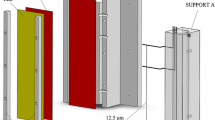Abstract
Analysis of machining processes is important in the understanding and improving of manufacturing methods. The modeling of machining processes relies on high-strain-rate, high-temperature material properties. A Split–Hopkinson (or Kolsky) bar has been developed at NIST for this purpose. By heating the material specimen rapidly with a controlled current pulse prior to the mechanical impact of the bar, structural changes in the specimen are inhibited, thus better simulating conditions during machining. A stress-strain relationship can be determined at various temperatures for a range of materials. For the elevated temperature Kolsky experiments it is essential for the specimen to be maintained at a constant and uniform temperature prior to dynamic loading. The development and implementation of a near-infrared micro-pyrometer (NIMPY) for the precision control of the Kolsky specimen temperature by using a pulse heating system preceding the mechanical impact are described. The pulse-heating system can be operated either in the transient mode, where the current to the specimen is switched off at a preset temperature or time; or in the brief steady-state mode, where the specimen is heated rapidly to achieve the preset temperature (in the range from 400 to 1300 K) in a short time (about 200 ms) and then held isothermally for a brief period (<2s). A brief description of a model of the pulse heating process is provided, and the predicted specimen temperature history is compared with measured temperature data.
Similar content being viewed by others
REFERENCES
S. Kalpakjian, Manufacturing Processes for Engineering Materials, 2nd edn. (Addison–Wesley, Reading, Massachusetts, 1991).
P. S. Follansbee, in Metals Handbook, 9th Ed., Vol. 8, J. R. Newby, J. R. Davies, S. K. Refsnes, D. A. Dieterich, and H. J. Frisnell, eds. (ASM, Metals Park, Ohio, 1985), pp. 198-203.
T. Matsumoto and A. Ono, High Temp.-High Press. 25:525(1993).
T. Matsumoto and A. Cezairliyan, Int. J. Thermophys. 18:1539(1997).
T. Matsumoto, A. Cezairliyan, and D. Basak, Int. J. Thermophys. 20:943(1999).
D. Basak, U. R. Kattner, J. L. McClure, D. Josell, and A. Cezairliyan, Int. J. Thermophys. 21:913(2000).
L. Hanssen, Appl. Opt. 40:3196(2001).
H. W. Yoon, D. Basak, R. Rhorer, E. P. Whitenton, T. J. Burns, R. J. Fields, and L. E. Levine, Thermosense XXV, Orlando, Florida, April 21–25, 2003.
K. J. Aström and T. Hägglund, Automatic Tuning of PID Controllers (Instrument Society of America, Research Triangle Park, North Carolina, 1988).
M. N. özisik, Heat Transfer: A Basic Approach (McGraw–Hill, New York, 1983).
Author information
Authors and Affiliations
Corresponding author
Rights and permissions
About this article
Cite this article
Basak, D., Yoon, H.W., Rhorer, R. et al. Temperature Control of Pulse Heated Specimens in a Kolsky Bar Apparatus Using Microsecond Time-Resolved Pyrometry. International Journal of Thermophysics 25, 561–574 (2004). https://doi.org/10.1023/B:IJOT.0000028490.97741.4f
Issue Date:
DOI: https://doi.org/10.1023/B:IJOT.0000028490.97741.4f




